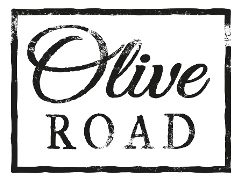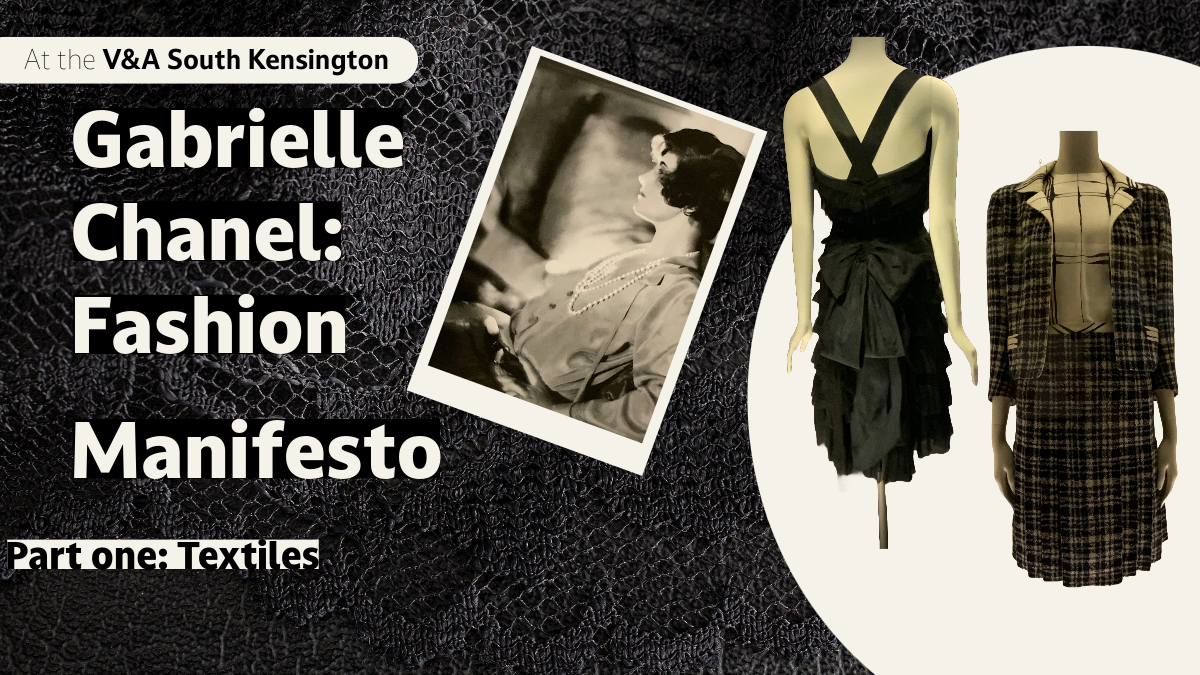
Part One: Textiles
Exhibition Review from the Chanel fashion exhibition at the V&A London
Gabrielle Chanel is one of the most important designers of the past 100 years. She was The 19th Century designer.
Oriele Cullen, Curator of the exhibition at the V&A, South Kensington (1)
Gabrielle Chanel Fashion Manifesto is a hot ticket. As a V&A member I was able to book for preview access to the most eagerly anticipated fashion exhibition of 2023. I logged into the V&A website at the advertised time to book preview tickets and was entered into a Glastonbury Festival style booking system. My patience paid of and 45 minutes later I had my preview ticket.
The online curator talk taking place on preview day only heightened the excitement. Originating at the Palais Galliera in Paris from their own archives, then onto Melbourne and Tokyo, the exhibition has swelled on it’s arrival to London by 100 pieces. With over 191 mannequins on display from 25 lenders including the V&A’s own collection, the US and Europe.
The exhibition was conceived from looking at Chanel’s design work. It looks at her 60 year career, with a focus on clothing. We have a wide audience, we thought it was important to put her work in context. There is a light touch of biography through imagery and captions. We get a sense of her but the exhibition is not about her life.
Oriele Cullen, Curator of the exhibition at the V&A, South Kensington (1)
Cullen continues, ‘The visitor is first introduced to a time line’. White convex walls invited me into the exhibition with the stark black text stretched across both sides. Chanel’s timeline is a useful biography but it is almost irrelevant to the designs. Throughout the exhibition it is striking how modern each of the garments are. Cullen attributes this to ‘the foresight of her design, pieces from 100 years ago are as wearable today. They have lasted the test of time.’ (1)
A new use of textiles
Textiles are important within Chanel’s approach to design. The curators attributed the wearability of the clothes to the fabrics Chanel used, which were revolutionary at the time.
A silk jersey tunic may not seem revolutionary to us in the new millennium but in 1916 it ‘sets out the streamline modern vision of her approach to fashion’ explains Cullen. Such a contrast to the complex designs of Chanel’s contemporaries. Silk jersey was very practical but it had only previously been used for men’s sportswear and underwear. It falls beautifully and is relevant to today.
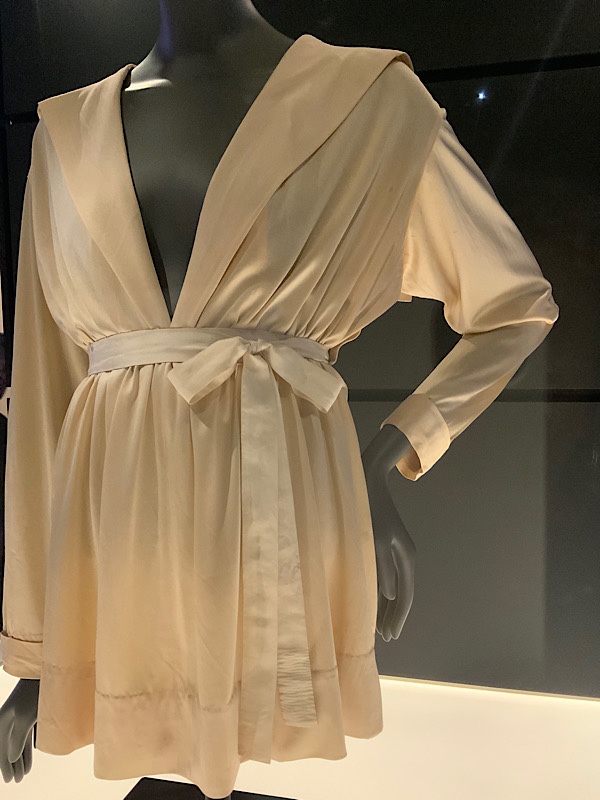
‘Chanel made stylishness a practical choice, using light silks, easy cottons and stretch jersey fabrics for both day and evening wear. She demonstrated an ease in dressing that is still revered in Britain as the epitome of French chic’ (2).
Some of the first mannequins encountered on entering the exhibition are of made from a knitted jersey with an abstract design. What would be considered a textile for casual wear, Chanel has utilised in a suit and skirt, creating a relaxed tailored style. ‘It is based on the idea of a three-piece suit in knit fabric, prefigures Chanel’s iconic tweed suits of the 1950s and 60s’. (3).
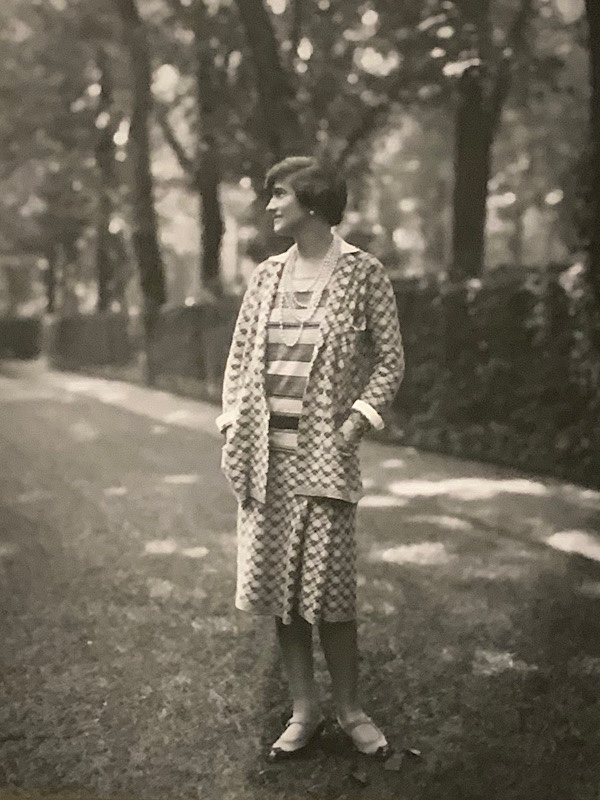
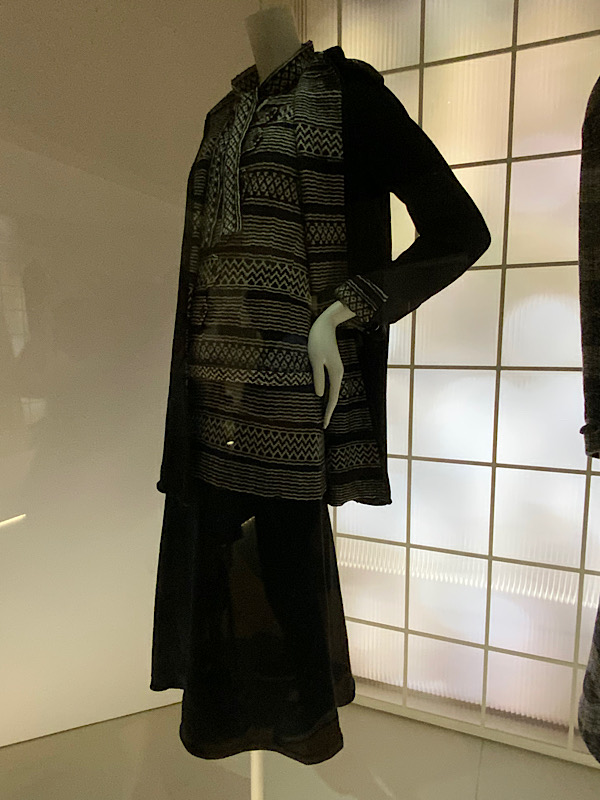
Her company, British Chanel, worked with nine English textile companies. This is thought to have been influenced by her long relationship with the Duke of Westminster where Gabrielle spent time on the Duke’s Scottish estate during the 1920s. Linton Tweeds, based in Cumbria, produced special and experimental tweeds with Chanel throughout her lifetime. In particular tweeds that had a soft drape and would suit her relaxed designs. ‘In 1927, Vogue reported on Chanel’s use of British tweeds: The couturier ‘whose clothes are invariably simple, practical and beautiful, is making a feature of models of Scotch tweed in her recent collections.” (3)
The first noticeable feature of a Chanel suit is the lose construction of the tweed, creating a softer look and feel than the equivalent in men’s sportswear at the time. Chanel also acquired fabric factories in France. Those factories on both sides of the channel produced textiles to Chanel’s design and sold them under her brand.
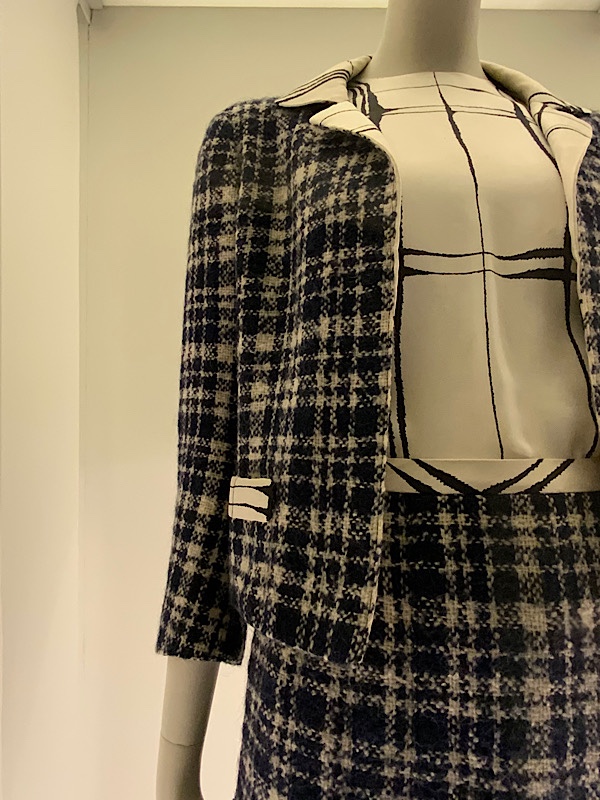
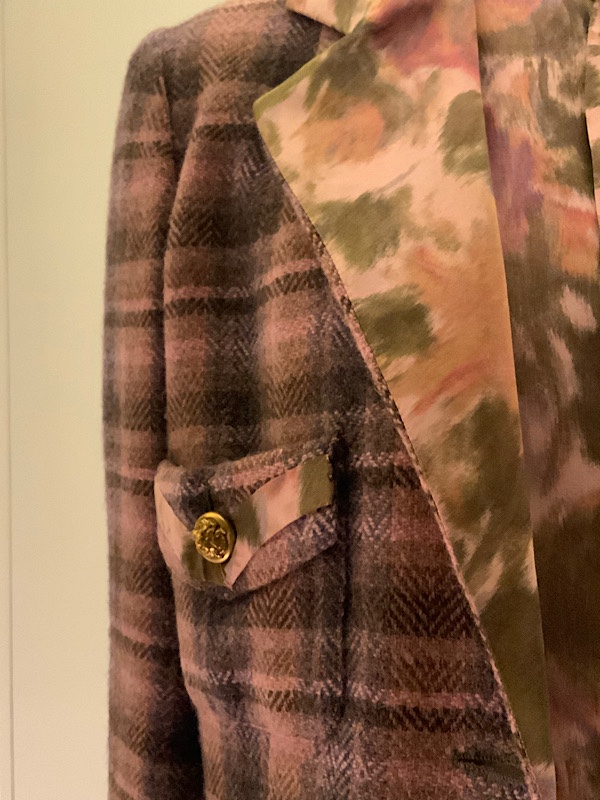
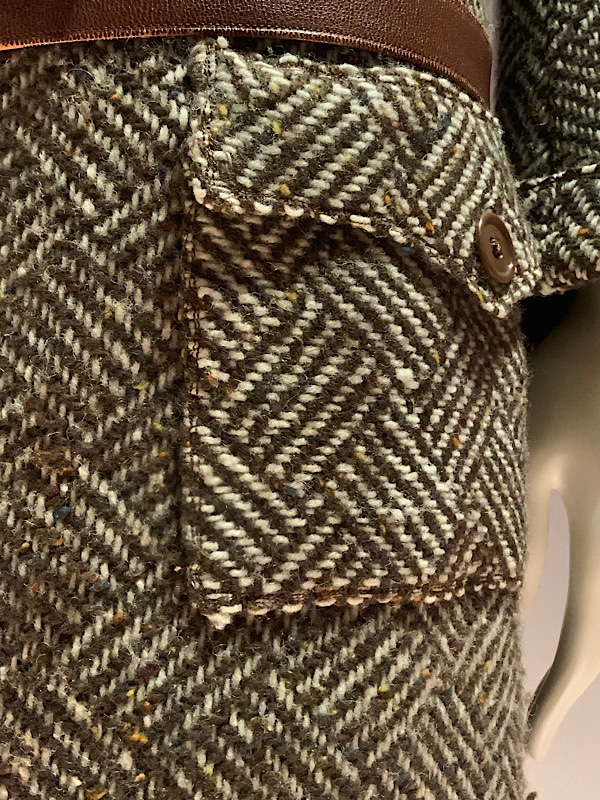
The Suit
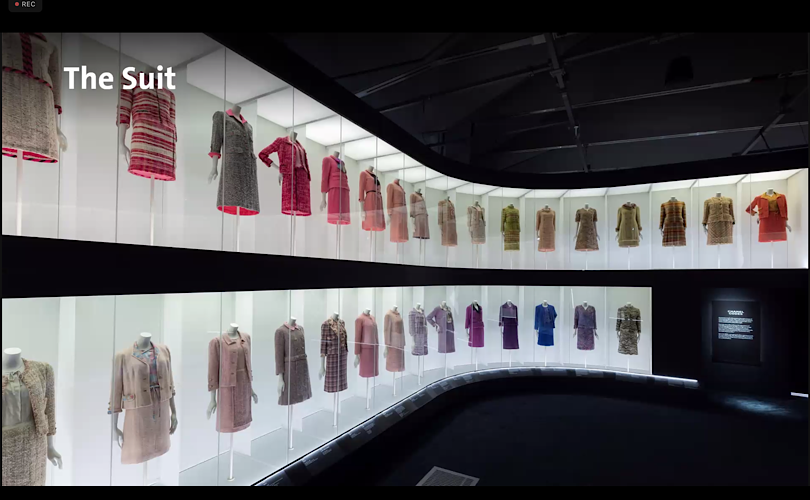
One of the most striking galleries at the exhibition is the suit room. ‘The defining garment of Gabrielle Chanel’s post-war contribution to fashion’ the exhibition text states. ‘Chanel chose supple fabrics that allowed for greater freedom of movement. Adopting a cardigan like cut for her jackets and a simple skirt that sat on the upper hip, she constructed her suits with the natural motion of a woman’s body in mind’. (3)
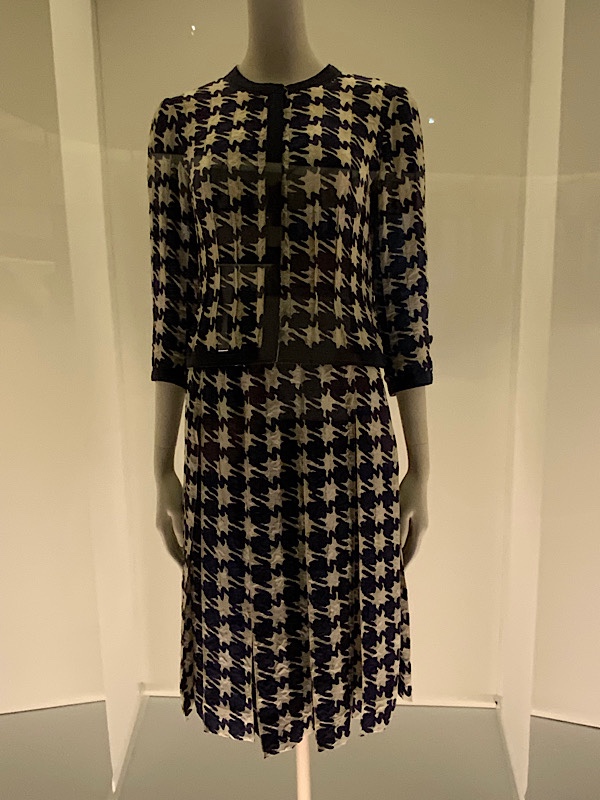
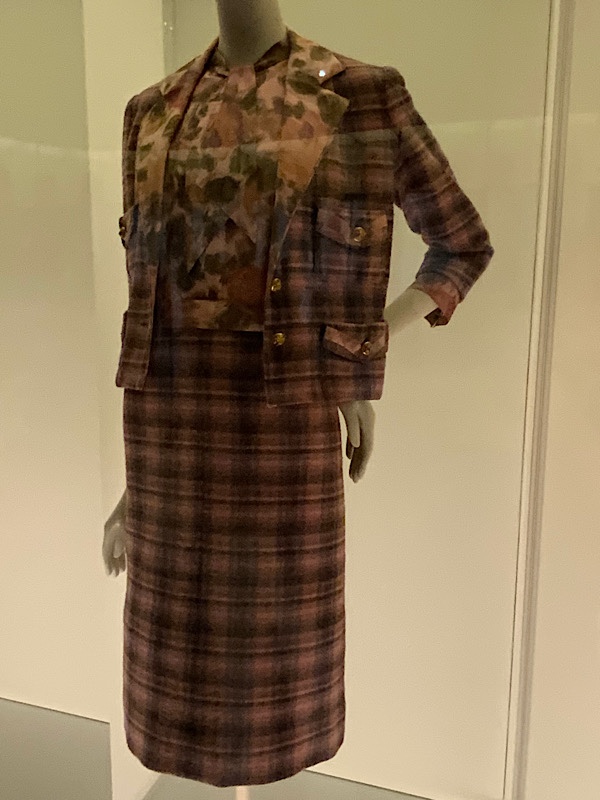
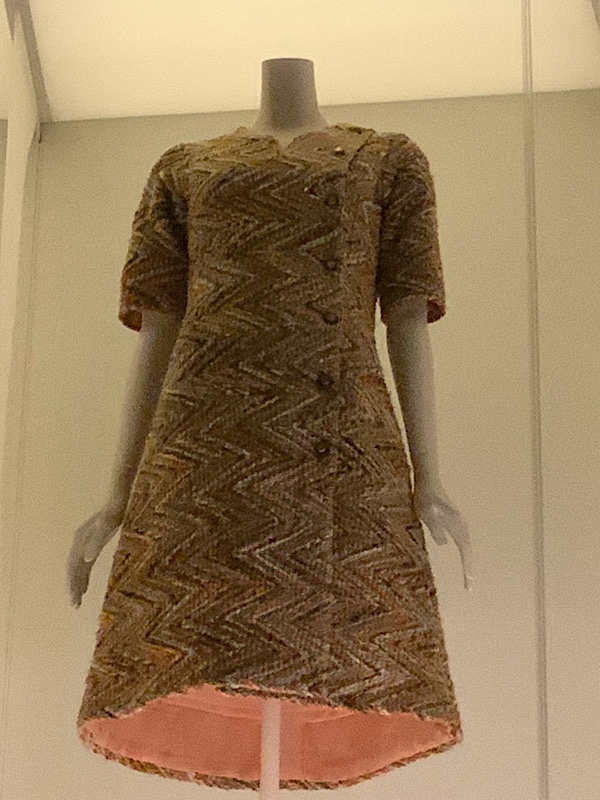
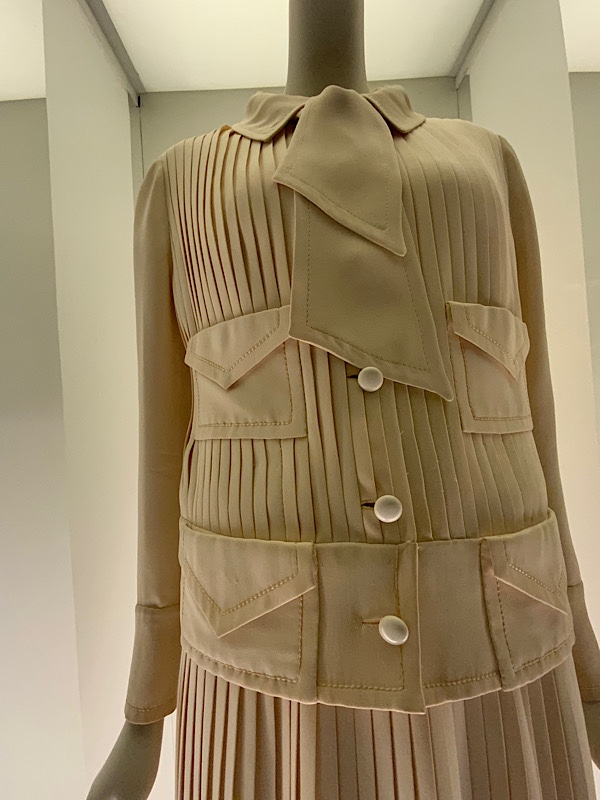
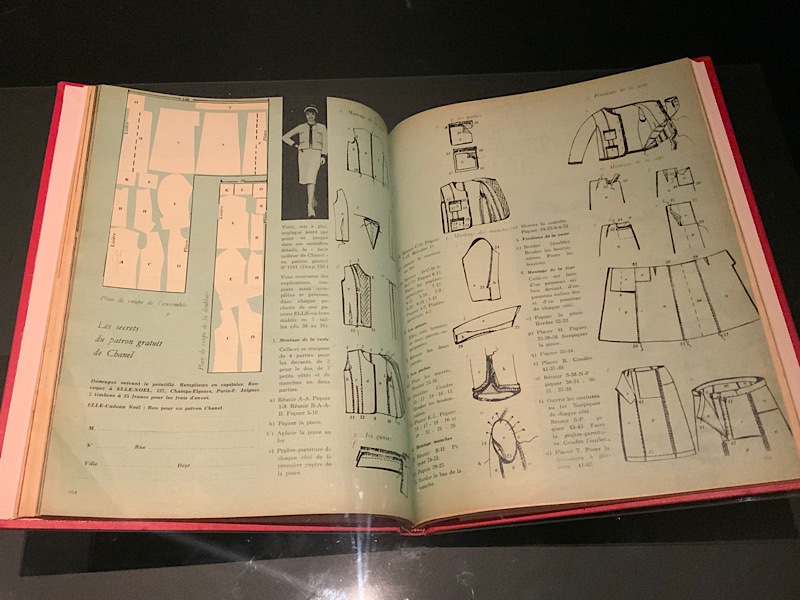
References
Gabrielle Chanel: Fashion Manifesto is on at the V&A South Kensington until February 2024. Tickets are now sold out but you can still gain access by becoming a member of the V&A. This gives you access to all the exhibitions, including the paid ticketed exhibitions. Plus 10% discount in the shop and access to lots of interesting events and talks. I joined the Curators Talk online a few days before the exhibition was launched. It gave me interesting insights and quotes before I visited the exhibition, which I’ve included in this blog post (reference 1). My membership also gives me free access at other V&A sites such as Dundee, where I visited the Tartan exhibition whilst on holiday in Scotland. Visiting a paid for exhibition 4 x a year is the same price as a years membership. I’ll be visiting this Chanel exhibition at least four times!
The curator’s talk was presented by Oriele Cullen, Connie Karol Burks and Stephanie Wood.
Reference 2: Quotes taken from the Autumn 2023 edition of the V&A magazine
Reference 3: Quotes taken from the wording displayed throughout the Gabrielle Chanel exhibition at the V&A South Kensington, September 2023.
